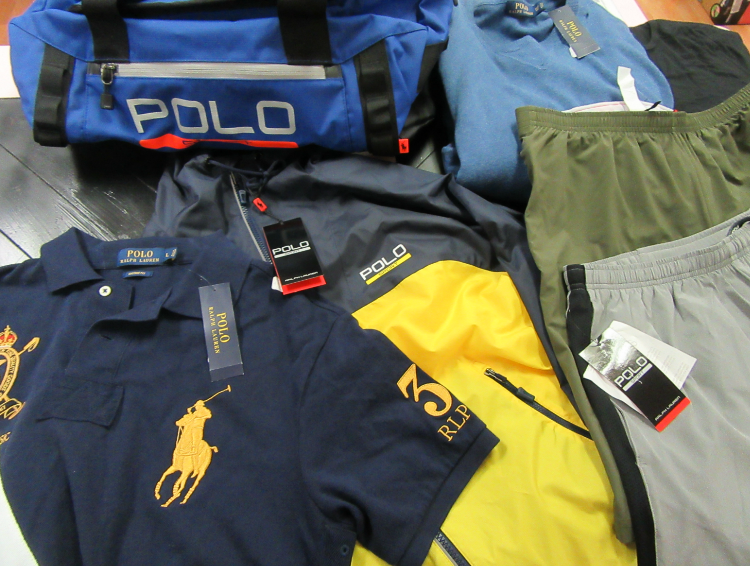Complete Guide to the Different Types of Liquidations
In our article, How Wholesale, Liquidations and Store Returns Work we learned about the difference between these three types of wholesale and how we get our inventory. Today we are going to focus on the different types of Liquidations. Let’s begin!
Liquidations, to put it simply, are extra items.

There are lots of different reasons why the store liquidates inventory.
Here are 8 main types of Liquidations:
- Season change - stores do not keep winter coats out in summer
- Seasonal - Christmas decor is not on the sales floor at Easter. Easter merchandise is not on the sales floor at Halloween and so on.
- Leftover Clearance Stock - Stores have to constantly change their selection. Every product in a store is on a schedule from the time it arrives .After so-many-weeks it gets a price “mark down” then, after more time, it is put on Clearance and marked down lower and finally it is Liquidated to companies like BigBrandWholesale.com. During this wholesale process new stock is brought in, then marked down, then clearanced; it’s an endless cycle, which means there are always items coming in and always items going out.
- Extra Leftover Stock - Sometimes the extra stock never makes it to the sales floor. This is usually because the store over-ordered (bought too much of it) but it could also be because there wasn’t enough space for it or it didn’t sell as good as planned. For example, if a store gets in 2,000 pink parkas with fur trim and the weather in January is surprisingly warm, this awesome parka would not sell well simply due to warmer temperatures. Equally, if the store gets in cute crop tops but it is a cooler, rainer summer, these tops wouln’t fly off shelves.
- Damaged from being in the store - many items get damaged just by being For Sale in a store. Customers drop items and get them dirty or dent them. Customers open an item to test it. People open an item to steal some. Customers rip an item trying it on our get stains on the item from touching it. I’m sure you have seen the “Floor Model” shoes and such that have dirty bottoms just from people trying them on and walking around the store in them.
- Discontinued - Items get discontinued all the time. Brands like Revlon or companies like Victorias Secret are always making new items so they have to discontinue items (if they didn't, they would have the biggest catalog ever which would cost way too much to make)
- Store Returns - As you probably guessed, a “Store Return” is when a person returns an item to the store. You may automatically think that a Store Return must be awful but that isn’t always the case. There are several reasons people return stuff:
- It didn’t fit / Bought the wrong size
- Found it cheaper somewhere else
- Decided not to use it
- It was a gift and I don’t like it or I bought it for someone else and they don’t want it
- I need the money back to pay for something else, such as a bill or concert tickets
- I washed / wore it and it fell apart. Or maybe you didn’t wear it but you decided you didn’t like the quality
- I didn’t wear it but I damaged it. For example, coffee was spilled on it on the drive home
So as you can see, out of all the different reasons for returns, only a couple reasons involve actual damage.
Some businesses “Grade” their liquidations. The most common grades you will see are:
Grade A - New, Perfect merchandise
Grade B or A/B - Typically refers to Liquidation in New or Very Good Condition, Potentially Removed from Packaging, but limited wear or use with No obvious parts and pieces missing. Price Tags or UPC are usually still intact. Since merchandise is not opened and tested it may contain concealed damage that you will have to deal with.
Grade C / D - Potential damage to packaging or packaging can be missing. Some pieces might be used or tampered with (such as a pair of socks stolen out of a set). Merchandise could have Stains, Dirt, Tears or Could have Missing parts (such as a power cord missing from an electronic). Sometimes labels are applied that indicate damage/defect of the item(s). May display sticker with return reason. Grade C/D is not tested for functionality, meaning the MP3 player might not work or the zipper on the coat might be broken.
Then there is “Salvage”. Salvage can mean a couple different things, depending what company you buy through. Most of the time Salvage means the merchandise is all damaged. It usually can be sold for piece-parts or repurposed. It’s possible you might be able to refurbish it.
Other times salvage means the leftover-leftovers. For example, let’s say a store was flooded with water. Some stuff might be able to be “salvaged” after the flood. Or, if a store goes out of business, after they liquidate all of the assets possible there will be some stuff left over, like random fixtures, stuff from the back room, etc.
We have also seen other companies refer to “Store Returns” as salvage, which is very misleading because some companies refer to very damaged store returns as salvage (such as a dress that has a giant slash down the middle that cannot ever be fixed. Personally, we do not EVER recommend buying from the salvage category UNLESS you want piece-parts. For example, maybe you repair computers and the salvaged piece parts would help you refurbish more computers. Or, if you buy Salvage jewelry you can get a boatload of beads, clasps, etc to craft (repurpose) stuff for etsy.
Love this article? Check out our other Amazon & eCommerce detailed guides:
- What is Best to Sell Online? How to Pick Inventory for Your Internet Store
- Complete Guide to Amazon Ungating for Beginners
- How Wholesale, Liquidations and Store Returns Work: How We Get Our Inventory
- Top 5 Reasons You Aren't Getting Ungated on Amazon
- How to Shelve and Store Your Inventory! Complete Guide
- 20+ Mens Items that SHIP CHEAP (First Class)
- Amazon Ungating Checklist
- What is a Purchase Order & How to Get One
- Check out our Free Amazon Ungating Terminology Dictionary!
- What is a BOL and How to Find Yours
- What is a PRO Number and How to Find Yours
- How to Get a Resellers Permit / Resale Certificate
- What is an EIN and How to Get One
- What is an LLC and How to Get One
- How to Create an Awesome Company Logo FAST and FREE
- Help! My Inventory is Priced Super Low and Still Isn't Selling!
- Before You Sign a Commercial WAREHOUSE Lease Read these Secrets! 5 Things Nobody Ever Tells You!
- Learn About Our Invoices
- HELP! I Missed USPS Delivery! How Can I Get My Parcel?!
- Download our Contract Terms Document for Free: https://bigbrandwholesale.com/faq/questions-about-invoices/terms-download-document/?ctk=1296275b-acaa-4553-9425-750ba3dd68b2
- Or, TOUR OUR WAREHOUSE https://bigbrandwholesale.com/about-our-warehouse/
Recent Posts
-
WhatNot LIVE AUCTIONS LIQUIDATION EVENT! October 15th - Nov 12th!
We are doing a MASSIVE liquidation auction event on WhatNot! Every TUESDAY from October 15th thr …2nd Oct 2024 -
MASSIVE NEWS! 4 HUGE UPDATES Coming to Big Brand Wholesale.com!
We have TONS of exciting news! Check out our Facebook video from July 12th 2024 (below) then keep r …22nd Jul 2024 -
3 COMPANIES PRETENDING TO BE BigBrandWholesale.com! DO NOT ORDER THROUGH IMPOSTERS!
IMPOSTERS! BE CAREFUL!! DON’T BE FOOLED! We now have at least 3 different people PRETENDING to …23rd Dec 2023




